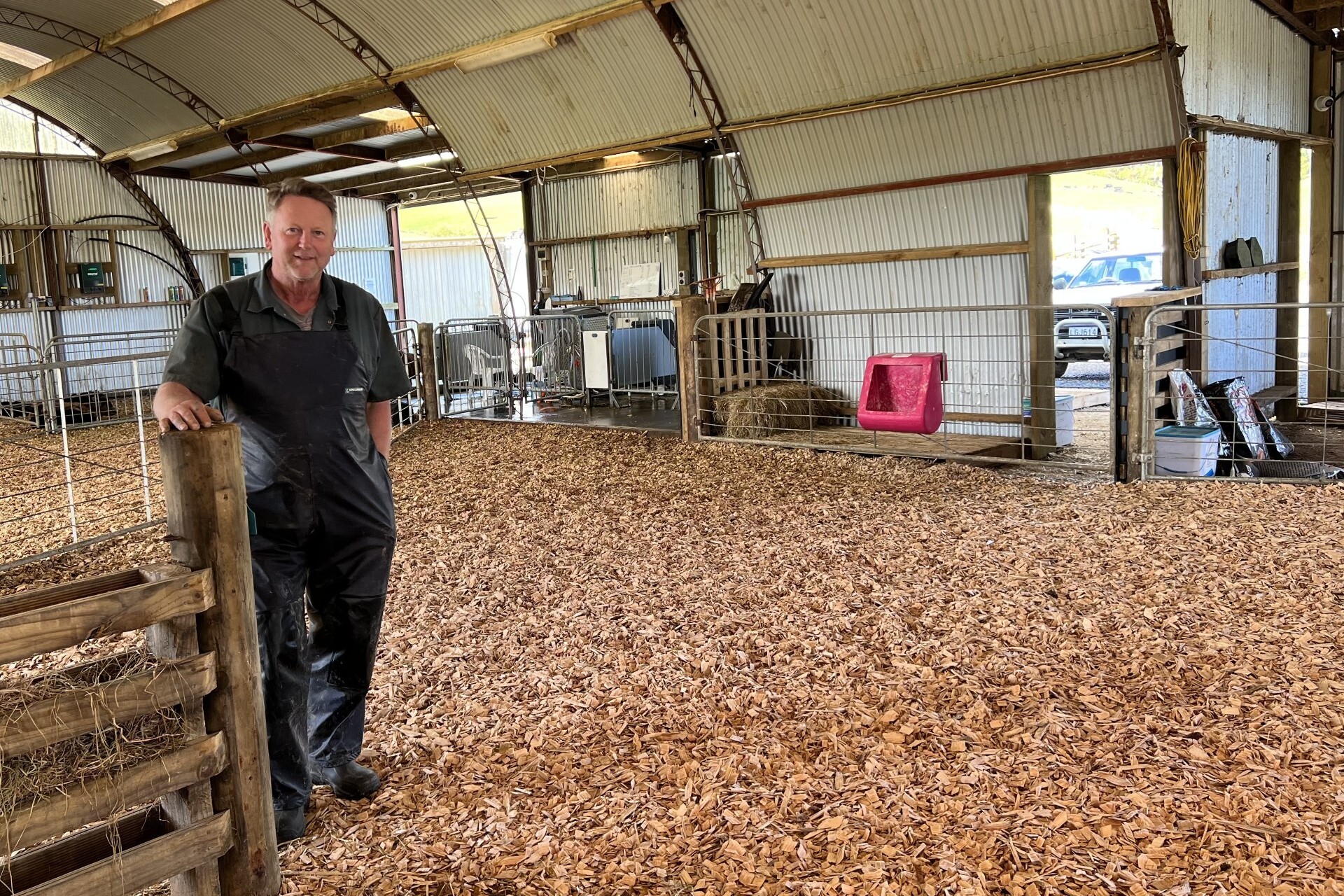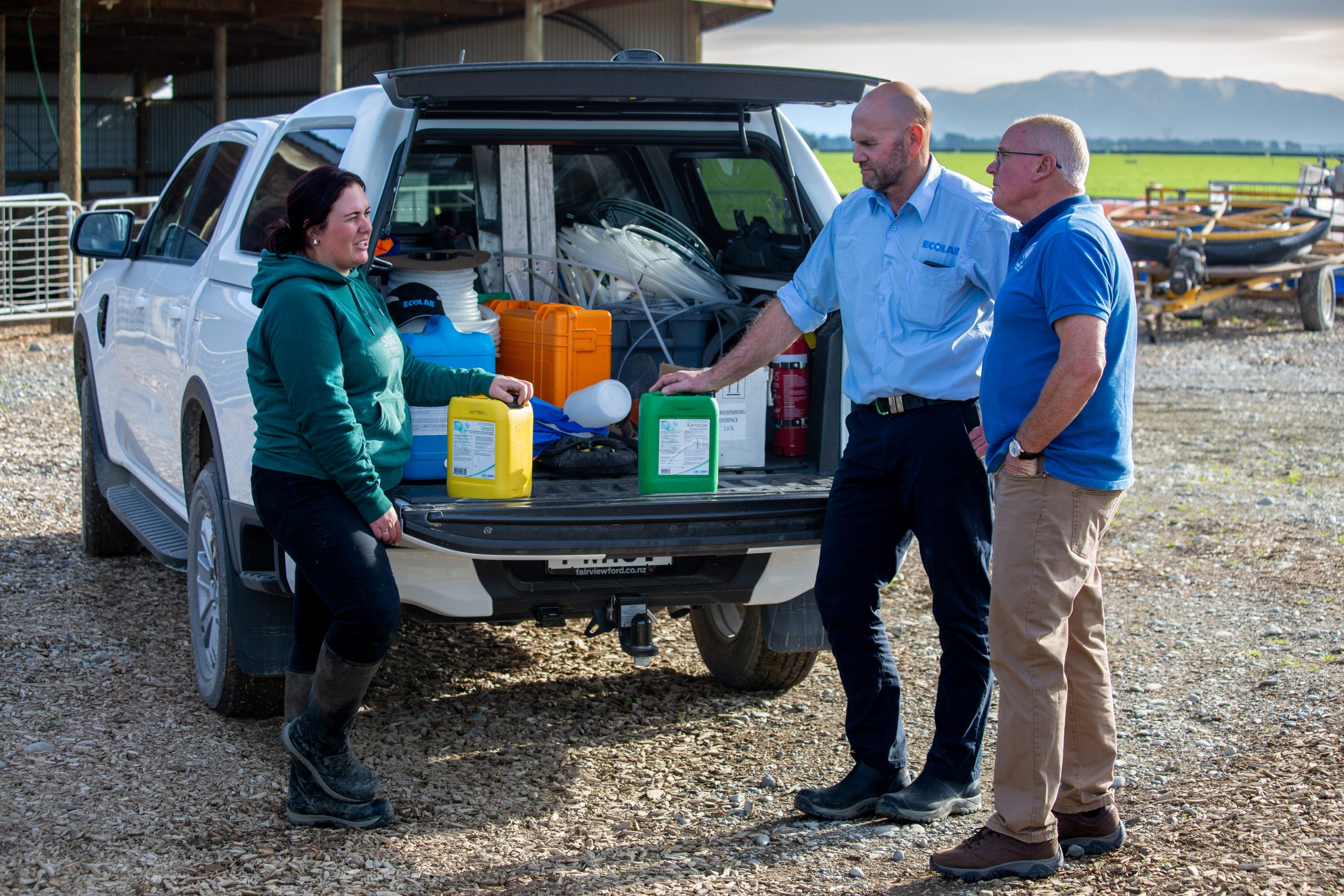Karen Trebilcock
Sharemilker Ben Smith is rapidly moving towards his goal of increasing his herd’s worth by using short gestation length (SGL) semen.
It’s allowed him to cull non-performers and those with bad feet and high somatic cell counts, cutting his vet bill.
“It enables us to have more choice without affecting our goals,” Ben says.
“We’ve raised the BW from 84 to 96 in two years and the genetic gain we’ll get this spring from the heifers coming into the herd will be a huge jump because that’s when we’ll really see the effects of what we’re doing.”
‘The six-week in-calf rate which DairyNZ push as an economic driver doesn’t always capture the full picture with SGL becoming available. It needs to be now the six-week expected calved rate.’
He does six weeks’ artificial insemination with sexed semen and Wagyu beef and then six weeks of LIC SGL using a LIC AI technician.
There are no bulls onfarm except for a couple of home-bred ones running with the yearlings.
“We have a completely closed system, including the young stock grazing so we have peace of mind that we’re not bringing anything in.”
And by using SGL, all calving is finished by early October, three weeks before AI starts about October 20 giving the cows plenty of time to recover.
“We really want no cows calving in October at all.”
Planned start of calving is about August 1 and although his six-week in-calf rate is calculated at 71%, he will have 81% of his cows calving in the first six weeks next year thanks to SGL.
“The six-week in-calf rate which DairyNZ push as an economic driver doesn’t always capture the full picture with SGL becoming available.
“It needs to be now the six-week expected calving rate.
“Last spring we had a cow calving in the second week with SGL. It had been mated in week seven of AI. That’s how good it’s getting. Think of the extra days in milk.”
SGL rates are halved by the maternal influence so a bull with a gestation length of minus 20 days will, on average, calve 10 days earlier. However, the cow’s gestation length genetics also influence the date so it is possible for cows to calve even earlier.
SGL dairy calves should not be kept for replacements as their milk production genetics are poor with the specific breeding scheme fully focused on the single trait of gestation length.
It means Ben doesn’t have to worry about late-calving cows when it comes to culling.
He’s a 50:50 sharemilker of 420 cows on a 108-hectare farm owned by Greg Paul whose brother Quintin owns a 218ha farm with 820 cows which he lower order sharemilks.
Both farms are near Waimate in South Canterbury with pivot and K-line irrigation.
He believes in feeding cows well targeting 20kg drymatter (DM)/cow/day during lactation with 18kg DM pasture and the rest either palm kernel or barley.
His goal is still farm ownership.
“I was talking to a friend who reached farm ownership a decade ago the other day who said, for all of his milking career the goalposts of farm ownership moved further away but he thinks at the moment they are actually starting to move closer.”
With high goals, profitability and increasing the value of his herd is all important and using LIC SGL semen has allowed him to cull his low economic cows.
“The vet isn’t happy with me. Anything with feet problems or mastitis goes. My animal health bill is really low.”
The larger farm’s empty rate is 11% this year and 9% for the smaller farm.
“Ideally I would like them both to be in single figures. We milk everything until the end of May and send culls away then with a late scan to check for embryo loss.”
The mid-February scan gives calving dates and he runs the SGL cows and non-SGL cows separately at calving so SGL calves are not kept by mistake.
“We DNA everything but by then it’s too late for the bobby truck if we have got it wrong.”
His cows in calf to Wagyu will also be kept separate this coming spring after he learnt the lesson last year on just how difficult it is to pick a Wagyu dairy cross calf.
“They look just like a Friesian Jersey cross calf. You can’t tell them apart.”
Using Wagyu semen gives him a guaranteed payment for the beef animals. Last year he averaged $620 per calf at 90kg plus from First Light.
“A lot of people I know who reared whiteface beef couldn’t sell them last spring. With Wagyu we have a contract with the price so it gives us a lot of confidence.”
Low BW cows coming up for AI in the first six weeks get a Wagyu straw and the high BW cows get LIC fresh sexed A2 semen with a replacement rate of about 25% the aim.
Friesian straws are used for Jersey animals and KiwiCross for Friesians with Ben wanting an all-black, medium-sized cow.
“The genetic gain we’re getting is just huge with the combination of high-BW sexed semen and only mating it with our top cows. It’s going to really lift again when the heifers come into the herd this spring.
Part of the equation is the Allflex collars all of the cows wear which accurately shows heats.
“It takes a lot of the work out of doing AI for that long and we know the cow is in heat, not just with rubbed off tail paint for some other reason.”
He uses CIDRs in the mixed-age cows if needed.
“The criteria we have is any cow that is 35 days post calving at time of PSM that hasn’t cycled gets a CIDR. Two years ago we did 160 in the small herd and this year it was only 34.
“The aim is to keep it dropping.
“We get very accurate cycling information from the collars without having to do anything so why wouldn’t we use the information?”
Although the milk, which goes to the nearby Oceania plant, doesn’t attract a premium for A2, Ben is still chasing the genotype.
“It’s something the farm owners were doing for five years before we took over so we decided to carry on.
“We always buy A2 milk as well, the whole family like it. We used to buy lactose-free milk but now we find A2 is just as good. No one gets an upset stomach with it.”
The young stock are looked after by the farm owners and the yearlings mated with nominated high genetics A2 sexed semen starting 10 days before the herd.
“Time is everything and it just gives them that extra chance to get in calf.”
Last spring he used AI for 14 days on the yearlings before using a PG shot on the remaining animals and then ran them with the home-bred bulls.
“The year before we did CIDRs and inseminated them all on the one day and then followed up a cycle later before putting the bulls in.
“We got a better result with the CIDRs and I think we will go back to that but it’s a lot more expensive. The genetic gain we’re getting makes it worth it though.”
Going no bulls was an easy choice for him.
“Our only NAIT movements were the breeding bulls so once we got rid of them out of the system two years ago it was easy.
“We no longer lose money on bulls when we sell them too.”
The empty rate jumped 3-4% in the first year but they had only done nine weeks of mating as opposed to 12-plus weeks with the bulls.
Extending AI out to 12 weeks with the use of SGL saw it back close to single figures and with a similar final calving date equivalent to the nine-week mating.
“It’s about giving every cow as many opportunities as possible to get in calf.”
Useful tool
LIC general manager NZ markets Malcolm Ellis says the SGL product range continues to be popular.
“While not the silver bullet to a herd’s reproductive performance, the strategic use of SGL semen is certainly a useful tool,” he said.
“The additional days in milk is a simple calculation and a beneficial enhancement to that all-important front-end milk production but increasingly farmers are recognising the use of SGL is much more.
“As farmers look to enhance their rate of genetic gain by identifying poorer quality cows not to be mated to ‘replacement AB’, SGL becomes the perfect companion product.
“Combining sexed semen with SGL only drives this positive impact harder.
“Additionally increased culling options as a result of being able to extend mating with the use of SGL by seven to 10 days but not extending the following years calving pattern sees more cows in calf which ultimately results in increased culling options”.





